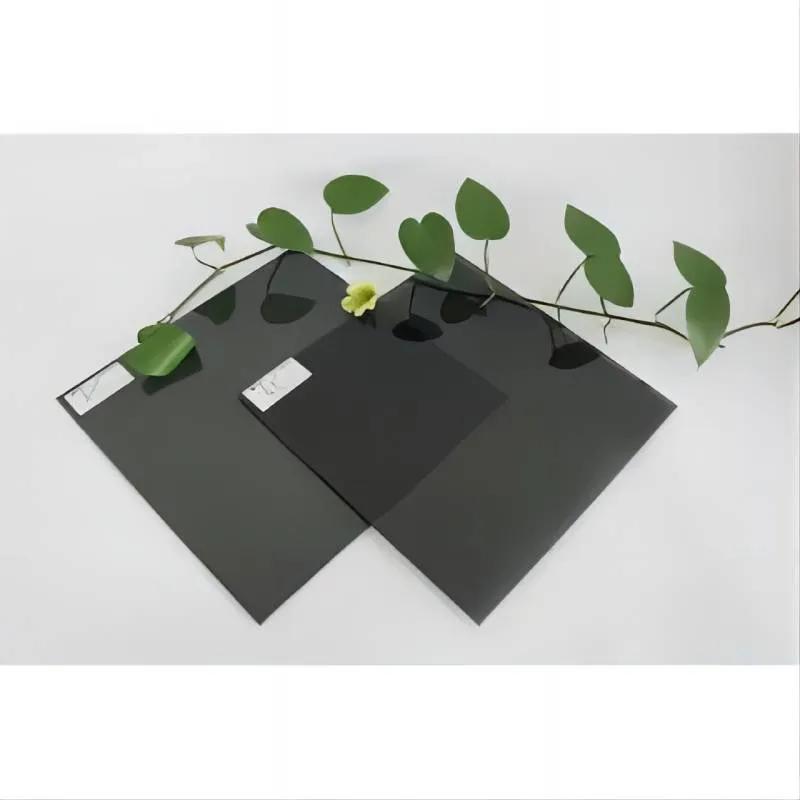Low-E Reflective Glass An Overview
In recent years, the building and construction industry has undergone significant transformations as we strive for energy efficiency and sustainability. One of the most noteworthy innovations is Low-E (low emissivity) reflective glass. This type of glass has emerged as a game-changer in both commercial and residential architecture, offering numerous benefits that align with growing environmental concerns and energy-saving mandates. This article delves into the features, advantages, applications, and future of Low-E reflective glass.
Understanding Low-E Reflective Glass
Low-E reflective glass is designed with a special coating that reflects infrared light while allowing visible light to pass through. The term low emissivity refers to the glass's ability to reduce the amount of heat transferred through the glass. This is achieved through thin metallic coatings that are usually applied to one or more sides of the glass pane. These coatings minimize the amount of ultraviolet (UV) and infrared radiation that enters the building, thus providing effective thermal insulation.
Energy Efficiency Benefits
One of the primary advantages of Low-E reflective glass is its significant contribution to energy efficiency. Buildings often account for a substantial portion of energy consumption, primarily for heating and cooling. By utilizing Low-E glass, homeowners and building operators can dramatically reduce their reliance on heating, ventilation, and air conditioning (HVAC) systems.
In winter, Low-E glass helps retain heat indoors by reflecting it back, while in summer, it reduces solar heat gain, keeping indoor environments cooler and more comfortable. This dual action results in lower energy bills and a decreased carbon footprint, making Low-E glass an environmentally friendly choice.
Improved Comfort and Aesthetic Qualities
Besides energy savings, Low-E reflective glass enhances the comfort levels within buildings by stabilizing indoor temperatures. The glass limits glare and reduces hot spots caused by direct sunlight, creating a more pleasant environment for occupants.
low e reflective glass
Aesthetically, Low-E glass can also offer a sleek and modern look. The reflective quality of the glass can enhance the appearance of a building while providing a coating that helps prevent fading of interior furnishings and artworks caused by harmful UV rays.
Versatile Applications
Low-E reflective glass is versatile and applicable in a variety of settings. It is commonly used in residential homes, commercial buildings, skyscrapers, and even in vehicles. For residential purposes, homeowners benefit from its ability to keep homes warmer in winter and cooler in summer. In commercial buildings, the use of Low-E glass can contribute to achieving green building certifications, such as LEED (Leadership in Energy and Environmental Design).
Skyscrapers employing Low-E glass can achieve significant reductions in heat gain, thus requiring less extensive HVAC systems and contributing to a more sustainable urban environment. Moreover, many vehicle manufacturers are now incorporating Low-E glass to help improve energy efficiency in contemporary automobiles.
Future Trends and Innovations
As awareness of sustainability and energy efficiency continues to rise, the demand for Low-E reflective glass is expected to grow. Future advancements may include the development of even more effective coatings that are transparent and leave minimal impact on the visible spectrum while maximizing energy efficiency.
Moreover, integrations with smart technologies may lead to the introduction of dynamic glazing options, where the properties of the glass can change based on external weather conditions, enhancing energy conservation.
Conclusion
Low-E reflective glass represents a significant innovation in building materials that harmonizes aesthetic appeal with energy efficiency. It provides a viable solution to some of the pressing environmental challenges faced by the modern world. As we look to the future, the adoption of Low-E reflective glass is likely to increase, helping to create more comfortable and sustainable living and working environments. By embracing such technologies, we can take meaningful steps towards energy conservation and a healthier planet.
 Afrikaans
Afrikaans  Albanian
Albanian  Amharic
Amharic  Arabic
Arabic  Armenian
Armenian  Azerbaijani
Azerbaijani  Basque
Basque  Belarusian
Belarusian  Bengali
Bengali  Bosnian
Bosnian  Bulgarian
Bulgarian  Catalan
Catalan  Cebuano
Cebuano  Corsican
Corsican  Croatian
Croatian  Czech
Czech  Danish
Danish  Dutch
Dutch  English
English  Esperanto
Esperanto  Estonian
Estonian  Finnish
Finnish  French
French  Frisian
Frisian  Galician
Galician  Georgian
Georgian  German
German  Greek
Greek  Gujarati
Gujarati  Haitian Creole
Haitian Creole  hausa
hausa  hawaiian
hawaiian  Hebrew
Hebrew  Hindi
Hindi  Miao
Miao  Hungarian
Hungarian  Icelandic
Icelandic  igbo
igbo  Indonesian
Indonesian  irish
irish  Italian
Italian  Japanese
Japanese  Javanese
Javanese  Kannada
Kannada  kazakh
kazakh  Khmer
Khmer  Rwandese
Rwandese  Korean
Korean  Kurdish
Kurdish  Kyrgyz
Kyrgyz  Lao
Lao  Latin
Latin  Latvian
Latvian  Lithuanian
Lithuanian  Luxembourgish
Luxembourgish  Macedonian
Macedonian  Malgashi
Malgashi  Malay
Malay  Malayalam
Malayalam  Maltese
Maltese  Maori
Maori  Marathi
Marathi  Mongolian
Mongolian  Myanmar
Myanmar  Nepali
Nepali  Norwegian
Norwegian  Norwegian
Norwegian  Occitan
Occitan  Pashto
Pashto  Persian
Persian  Polish
Polish  Portuguese
Portuguese  Punjabi
Punjabi  Romanian
Romanian  Russian
Russian  Samoan
Samoan  Scottish Gaelic
Scottish Gaelic  Serbian
Serbian  Sesotho
Sesotho  Shona
Shona  Sindhi
Sindhi  Sinhala
Sinhala  Slovak
Slovak  Slovenian
Slovenian  Somali
Somali  Spanish
Spanish  Sundanese
Sundanese  Swahili
Swahili  Swedish
Swedish  Tagalog
Tagalog  Tajik
Tajik  Tamil
Tamil  Tatar
Tatar  Telugu
Telugu  Thai
Thai  Turkish
Turkish  Turkmen
Turkmen  Ukrainian
Ukrainian  Urdu
Urdu  Uighur
Uighur  Uzbek
Uzbek  Vietnamese
Vietnamese  Welsh
Welsh  Bantu
Bantu  Yiddish
Yiddish  Yoruba
Yoruba  Zulu
Zulu 

